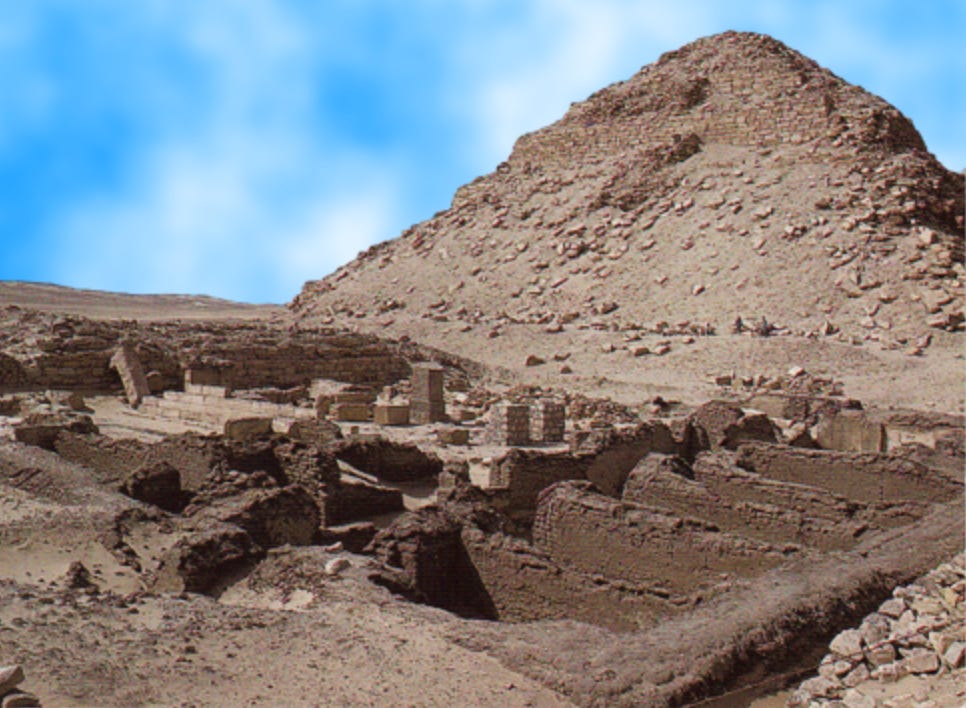Fresh Batch #92: Abusir, or is it Abba-Tyre, the God-Father?
Father of the Fishes or Father of the Bishops?
A site that’s less talked about, probably because of its remoteness, is Abusir. This is way out of my wheelhouse, as I have no experience as a stone mason nor am I an Egyptologist, nor have I been to Egypt. But there are artifacts here that are of interest to me pertaining to navigators, and so I’d like to bring this site to your attention in case you or anyone you know can bring forth information about it that can’t be found with simple internet searches. Many of these sites have not been explored and thoroughly documented by modern researchers.
Brien Foerster claimed the Egyptian pronunciation of its name was Buwiser, which is an awful lot like Budweiser, or Wise/White Buddha. We see this in Saint Buadán (Saint Baithen), as well as Buddwas (Welsh god Hu), or Budd, the God of Victory, the king or sun of the sky (From Proto-Celtic *boudi (“victory”), from Proto-Indo-European *bʰówdʰi (“victory”); compare Old Irish búaid.) Remember that Proto-Indo-European doesn’t exist in reality and is a construct created by modern scholars.
Brien claimed Abusir meant father of the fishes, which would be Dag-On, or Dag-Po, another name for Buddha. I suspect this is a translation taken literally without realizing the Bishops were called the Little Fishes (Pisciculi). This is the power of knowing the ancient universal system. You can go to a completely foreign location that you know nothing about, yet have more insight on its history than most people will ever be able to discover.
According to Wiki, Abusir (Arabic: ابو صير Egyptian Arabic pronunciation: [æbuˈsˤiːɾ]; Egyptian pr wsjr; Coptic: ⲃⲟⲩⲥⲓⲣⲓ busiri, the House or Temple of Osiris; Ancient Greek: Βούσιρις) is the name given to an ancient Egyptian archaeological pyramid complex comprising the ruins of 4 kings' pyramids dating to the Old Kingdom period, and is part of the Pyramid Fields of the Memphis and its Necropolis UNESCO World Heritage Site.
The pyramid of Neferirkare was built for the Fifth Dynasty pharaoh Neferirkare Kakai in the 25th century BC. It was the tallest structure on the highest site at the necropolis of Abusir, found between Giza and Saqqara, and still towers over the necropolis.
The pyramid is also significant because its excavation led to the discovery of the Abusir Papyri.
The Abusir Papyri are the largest papyrus findings to date from the Old Kingdom in ancient Egypt. The first papyri were discovered in 1893 at Abu Gorab near Abusir in northern Egypt. Their origins are dated to around the 24th century BC during the Fifth dynasty of Egypt, making them, even though often badly fragmented, among some of the oldest surviving papyri to date. Later on, a large number of additional manuscript fragments were discovered in the area.
The Abusir Papyri are a collection of administrative papyri dating to the 5th dynasty. The papyri were found in the temple complexes of Neferirkare Kakai, Neferefre and queen Khentkaus II.

The first fragments of the Abusir papyri were discovered in 1893 during illegal excavations at Abusir. They contained manuscripts with regards to Neferirkare Kakai and were subsequently sold to various Egyptologists and museums.
German Egyptologist Ludwig Borchardt later identified the find location to near the pyramid temple of the Fifth Dynasty king Neferirkare. This theory was confirmed by Borchardt's discovery of more fragments during excavations at the temple. The papyri from Neferirkare Kakai's complex were found in storerooms located in the southwestern part of the complex.
The destruction or crumbling over time is hard to fathom. What did the interiors look like before the rubble filled it up. Is it the nature of quarried stone to crumble like that or could some of it be geopolymer?

The Spirit Whirled series will teach you the ancient universal system, but Book IV ties it all together regarding Asia, Africa, and Europe.
This podcast was legendary as well if you’re looking for something to listen to while you’re out and about.
Become a member to access the rest of this article.
Keep reading with a 7-day free trial
Subscribe to Ancient History, Mythology, & Epic Fantasy to keep reading this post and get 7 days of free access to the full post archives.











